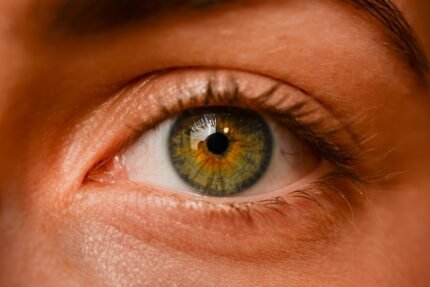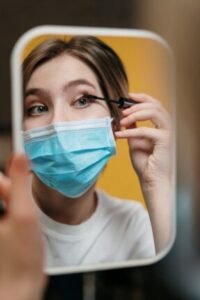Medically reviewed by Dr. Ramesh Gaddam, M.D. — Written by Sumalatha, D.N.H.E
4. When to Seek Medical Attention

While a broken blood vessel in the eye is typically harmless and resolves on its own, there are certain situations where medical attention is necessary. Knowing when to seek help can prevent complications and ensure proper treatment.
Persistent Discomfort
If the pain or discomfort in your eye persists for more than a few days, it’s important to consult a healthcare professional. Prolonged pain could indicate an underlying issue that needs medical evaluation.
Recurring Incidents
Frequent occurrences of broken blood vessels in the eye may signal a more serious condition, such as high blood pressure or a blood clotting disorder. If you experience this problem regularly, it’s crucial to see a doctor to determine the cause and receive appropriate treatment.
Other Symptoms
If you experience additional symptoms alongside the broken blood vessel, seek medical attention immediately. These symptoms may include:
- Vision Changes: Blurriness, double vision, or loss of vision
- Discharge: Yellow or green discharge from the eye
- Severe Pain: Intense pain in the eye or around it
- Swelling: Significant swelling around the eye
- Bleeding: Blood in other parts of the eye or from other areas
These symptoms could indicate more serious issues such as an infection, glaucoma, or retinal problems that require prompt medical intervention.
Prescription Eye Drops
In some cases, a doctor may prescribe eye drops to help with healing. If over-the-counter lubricating drops are not providing relief, a healthcare professional can recommend or prescribe stronger medication.
Monitoring Blood Pressure
High blood pressure is a common cause of broken blood vessels in the eye. If you have hypertension, it’s important to monitor and manage it effectively. Your doctor can help you develop a plan to keep your blood pressure under control through lifestyle changes, medication, or a combination of both.
Addressing Underlying Conditions
Certain medical conditions, such as diabetes or blood clotting disorders, can increase the risk of broken blood vessels in the eye. If you have any underlying health issues, work with your healthcare provider to manage them effectively. Proper management can prevent further eye problems and improve overall health.
By understanding when to seek medical attention, you can ensure that any serious underlying issues are addressed promptly. This proactive approach helps maintain eye health and prevents potential complications.
5. Medical Treatments

If home remedies and lifestyle adjustments are insufficient for healing a broken blood vessel in your eye, medical treatments may be necessary. These treatments address both the symptoms and underlying causes to promote healing and prevent recurrence.
Prescription Eye Drops
A doctor may prescribe stronger eye drops if over-the-counter lubricating drops are not effective. These prescription drops can reduce inflammation and provide more significant relief from discomfort. Follow the doctor’s instructions on how to use these drops correctly to avoid side effects and promote healing.
Monitoring Blood Pressure
High blood pressure is a leading cause of broken blood vessels in the eye. Regular monitoring and management of blood pressure are essential.
If your blood pressure is high, your doctor may recommend lifestyle changes such as diet and exercise adjustments, and possibly prescribe medication to control it.
Managing blood pressure effectively can prevent future occurrences of broken blood vessels.
Addressing Underlying Conditions
Certain underlying health conditions can increase the risk of broken blood vessels in the eye.
Conditions like diabetes, blood clotting disorders, and chronic hypertension need to be managed with the help of a healthcare professional.
Effective management of these conditions involves regular check-ups, medication adherence, and lifestyle modifications.
Treatment for Eye Infections
If the broken blood vessel is accompanied by signs of an infection, such as discharge or severe pain, your doctor may prescribe antibiotics or antiviral medications. Treating the infection promptly is crucial to prevent further damage to the eye and ensure a quicker recovery.
Surgery
In rare cases where a broken blood vessel is caused by a more serious eye condition, surgical intervention might be necessary. This could involve procedures to repair damaged blood vessels or address underlying issues affecting eye health.
Surgery is typically considered only when other treatments have failed or when there is a significant risk to vision.
Regular Follow-ups
Regular follow-up appointments with your eye specialist are important to monitor the healing process and ensure no complications arise. During these visits, your doctor can assess your eye health, adjust treatments as necessary, and provide guidance on how to prevent future issues.
By seeking appropriate medical treatments when necessary, you can address both the symptoms and causes of a broken blood vessel in your eye. This comprehensive approach ensures effective healing and helps maintain long-term eye health.
6. Prevention Tips

Preventing broken blood vessels in the eye involves taking proactive steps to protect your eye health and minimize risk factors. These tips can help you avoid future occurrences and maintain overall eye well-being.
Protective Eyewear
Wearing protective eyewear can prevent injuries that might cause broken blood vessels. Use safety glasses when working with tools, playing sports, or in environments with dust and debris.
Protective eyewear shields your eyes from physical harm and reduces the risk of damage.
Proper Eye Hygiene
Maintaining good eye hygiene is essential for preventing irritation and infection. Wash your hands regularly and avoid touching your eyes with dirty hands. Use clean towels and pillowcases to prevent bacteria and allergens from coming into contact with your eyes.
Additionally, avoid sharing eye makeup or contact lens solutions to reduce the risk of infections.
Regular Eye Exams
Scheduling regular eye exams with an eye specialist helps monitor your eye health and catch potential issues early. Eye exams can detect underlying conditions such as high blood pressure, diabetes, or eye infections that may contribute to broken blood vessels.
Regular check-ups allow your doctor to provide personalized advice and treatments to maintain optimal eye health.
Managing Allergies
If you suffer from allergies, managing them effectively can prevent eye irritation and reduce the risk of broken blood vessels. Use antihistamines or other allergy medications as recommended by your doctor.
Keeping windows closed during high pollen seasons and using air purifiers can also help reduce allergens in your environment.
Healthy Lifestyle
Adopting a healthy lifestyle can significantly impact your eye health. Maintain a balanced diet rich in vitamins and nutrients, stay hydrated, and engage in regular physical activity.
These habits support overall health and help prevent conditions like high blood pressure and diabetes that can affect your eyes.
Avoiding Eye Strain
Minimize activities that cause eye strain, such as prolonged screen time or reading in poor lighting. Follow the 20-20-20 rule: every 20 minutes, take a 20-second break and look at something 20 feet away.
Using artificial tears can also help keep your eyes moist and reduce strain.
Managing Stress
High stress levels can impact your blood pressure and overall health, potentially leading to broken blood vessels. Practice stress management techniques such as deep breathing exercises, meditation, or yoga.
Ensuring adequate rest and sleep is also crucial for reducing stress and maintaining eye health.
Monitoring Health Conditions
If you have health conditions like hypertension or diabetes, closely monitor and manage them with the help of your healthcare provider. Regular check-ups, medication adherence, and lifestyle modifications are key to keeping these conditions under control and protecting your eye health.
By following these prevention tips, you can reduce the risk of broken blood vessels in your eyes and maintain overall eye health.
Proactive measures and regular care play a vital role in protecting your vision and preventing future problems.
Conclusion
Medically reviewed by Dr. Ramesh Gaddam, M.D.

General Physician, Diabetologist, and Critical Care Specialist.
Discover more from Health Build-Up
Subscribe to get the latest posts sent to your email.



